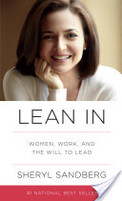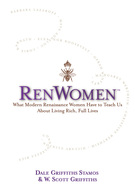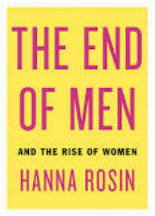Posted by: Dale Griffiths Stamos
It is interesting that, as we have been exploring the intriguing world of modern day Renaissance women for our book, RenWomen: What Modern Renaissance Women Have to Teach Us About Living Rich, Full LIves, we have noticed ways in which we are part of a growing zeitgeist. In the last few years, there have been an increasing number of books, websites, and blogs (not to speak of water cooler talk) about the role of women in the political, sociological, economic and cultural landscape of the 21st century. Books like Lean In and The End of Men: And The Rise of Women have stirred up both conversation and controversy. Lean In – is a call to women to take their place at the table, and to “lean in” with more confidence and commitment to their careers, The End of Men speaks to the shift from an industrial society to an age of information and communication, arguing that women have strengths that better suit them to our times, while men are struggling to adapt. Books like The Athena Doctrine and films like Femme: Women Healing the World stress the importance of bringing what are considered more “feminine” values into the workplace, and into society in general. They make the point that the “patriarchal” system has largely failed, and that it is time for women to take a lead in creating a balanced society where the best of male and female traits can move us toward a healthier world.
And there is unrest too in much of the current literature. The decades old question: Can Women Have it All? – has been brought once again to the forefront with powerful women at the top of their fields challenging this concept. There is Anne-Marie Slaughter and her provocative article in The Atlantic entitled, “Why Women Still Can’t ‘Have It All.’” There is Indra K. Nooyi, CEO of PepsiCo, who, in a recent interview by the Atlantic also agreed that “I don’t think women can have it all,” as she speaks to the constant pull between work and family. As more than one woman we have interviewed has acknowledged, women have achieved much in the workplace but they are still left with most of the responsibilities of motherhood and family, which has added more stress to their lives. So, although much has been gained, more re-thinking needs to happen – on both societal and personal levels.
All this seems to indicate a “new revolution,” if you will, is afoot in the women’s movement. While the first (still ongoing) is about equal rights and opportunities in the workplace, the second is about a more dimensional approach to work and life. It is an acknowledgement that, in the workplace, women do not have to “be like men” to succeed, but instead can bring the full array of feminine traits to their partnership with men. In like manner, in the home, women do not have to be the sole care takers, men can and should participate. We have been living for centuries in a lopsided world. The rigid lines about what is men’s work versus women’s work, and the primarily male traits that have dominated business and politics need re-evaluation. Yes, competition is healthy. But there are times when collaboration is the better choice. Yes, assertiveness and putting oneself forward is necessary. But so is listening and empathizing. Power and money have their place. But so do understanding how money and power can be used to give back to the world. And don’t both women and men want to spend quality time with family? And wouldn’t society benefit from this as well? In the end, it is all about balance.
Our book, and these other books and articles explore from different vantage points many of these questions. To us, it is clear we are moving toward a paradigm shift, and that there are exceptional women who have their finger on the pulse of change and are moving us steadily in that direction.
And there is unrest too in much of the current literature. The decades old question: Can Women Have it All? – has been brought once again to the forefront with powerful women at the top of their fields challenging this concept. There is Anne-Marie Slaughter and her provocative article in The Atlantic entitled, “Why Women Still Can’t ‘Have It All.’” There is Indra K. Nooyi, CEO of PepsiCo, who, in a recent interview by the Atlantic also agreed that “I don’t think women can have it all,” as she speaks to the constant pull between work and family. As more than one woman we have interviewed has acknowledged, women have achieved much in the workplace but they are still left with most of the responsibilities of motherhood and family, which has added more stress to their lives. So, although much has been gained, more re-thinking needs to happen – on both societal and personal levels.
All this seems to indicate a “new revolution,” if you will, is afoot in the women’s movement. While the first (still ongoing) is about equal rights and opportunities in the workplace, the second is about a more dimensional approach to work and life. It is an acknowledgement that, in the workplace, women do not have to “be like men” to succeed, but instead can bring the full array of feminine traits to their partnership with men. In like manner, in the home, women do not have to be the sole care takers, men can and should participate. We have been living for centuries in a lopsided world. The rigid lines about what is men’s work versus women’s work, and the primarily male traits that have dominated business and politics need re-evaluation. Yes, competition is healthy. But there are times when collaboration is the better choice. Yes, assertiveness and putting oneself forward is necessary. But so is listening and empathizing. Power and money have their place. But so do understanding how money and power can be used to give back to the world. And don’t both women and men want to spend quality time with family? And wouldn’t society benefit from this as well? In the end, it is all about balance.
Our book, and these other books and articles explore from different vantage points many of these questions. To us, it is clear we are moving toward a paradigm shift, and that there are exceptional women who have their finger on the pulse of change and are moving us steadily in that direction.








 RSS Feed
RSS Feed